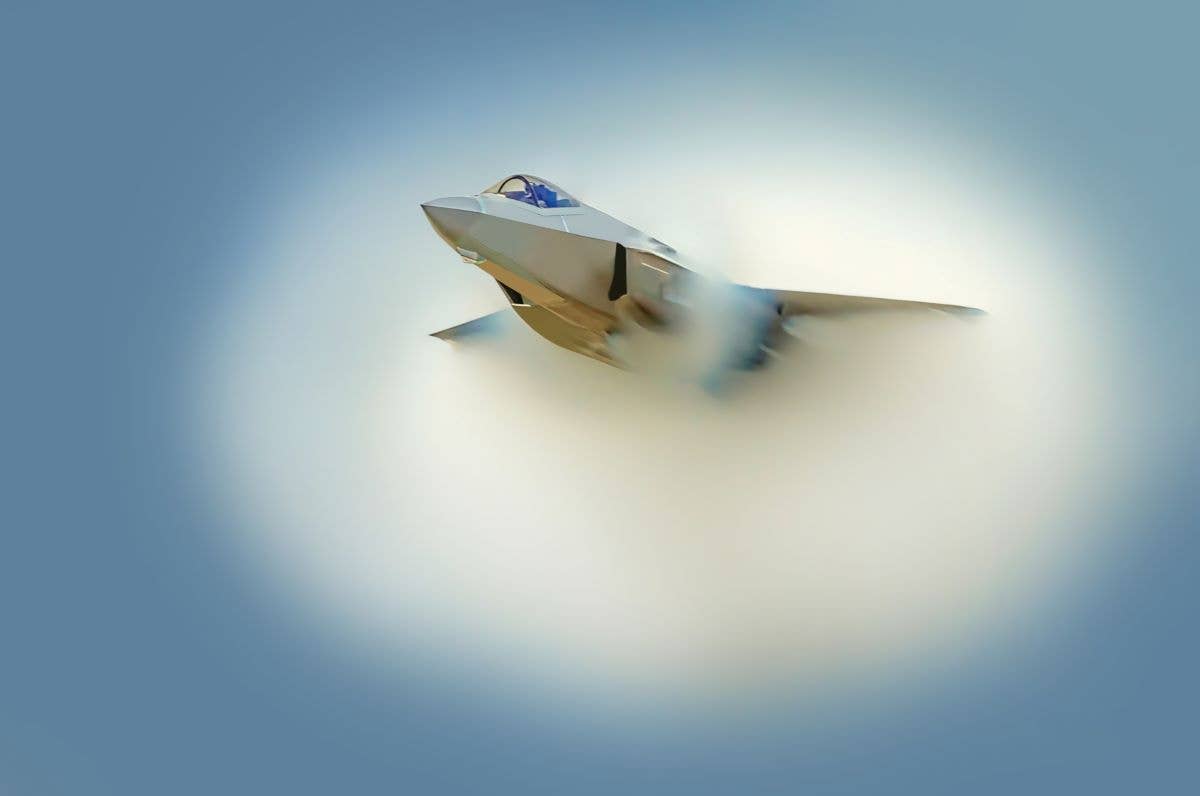Breaking Sound Barriers: 7 Fun Facts
The sky’s the limit when it comes to surpassing the sound barrier.

Crossing the sound barrier, also known as exceeding Mach 1, is the point at which an aircraft equals and surpasses the speed of sound. [Credit: Adobe Stock]
The quest for speed has long topped the achievement list for aviators, and breaking the sound barrier stands as one of aviation's most awe-inspiring feats. Going back to the pioneering exploits of Chuck Yeager, supersonic flight has shaped the course of aviation history.
Crossing the sound barrier, also known as exceeding Mach 1, is the point at which an aircraft equals and surpasses the speed of sound. As an aircraft approaches the barrier, increases in drag and other effects make it difficult to continue accelerating. At sea level and 68 degrees Fahrenheit, the speed of sound is approximately 767 mph (343 meters per second).
Most of us are familiar with the achievements of Yeager, the first pilot to officially break the sound barrier in 1947 in the Bell X-1 Glamorous Glennis. But what else do you know about the fastest pilots in history?
Here are seven fun facts about sound barrier-busting flights, shedding light on the challenges and triumphs above Mach 1.
1. Sonic Boom
Breaking the sound barrier creates a shock wave known as a “sonic boom.” This occurs when an aircraft moves faster than the speed of sound, resulting in a sudden release of pressure waves.
2. Supersonic Passenger Travel
The first supersonic passenger aircraft, Concorde, entered commercial service in 1976. It could reach speeds of Mach 2.04 (around 1,354 mph or 2,170 kph) and complete a transatlantic flight in just more than three hours.
3. First Woman
Jacqueline Cochran became the first woman to break the sound barrier on May 18, 1953, flying the Sabre 3 at Rogers Dry Lake, California. Cochran had celebrated her 48th birthday the week before.
4. Mach Tuck
Pilots flying at supersonic speeds experience a phenomenon known as "Mach tuck" or "compressibility." Changing airflow over the wings alters the wings’ center of pressure, causing the aircraft to pitch downward. Special measures are taken to mitigate this effect, like enlarging the horizontal stabilizer or moving fuel tanks on the fuselage.
5. Sound Barrier
The term "sound barrier" is somewhat misleading because there is no physical barrier at the speed of sound. The term is a holdover from early attempts that found it difficult to overcome the increased aerodynamic drag and other effects as aircraft approached Mach speeds.
6. Fast Free Falling
In 2012, Austrian skydiver Felix Baumgartner jumped from a height of approximately 24 miles, reaching a top speed of Mach 1.25 during his free-fall skydive.
7. SR-71 Blackbird
The world's fastest manned aircraft, the Lockheed SR-71 Blackbird, is capable of sustained speeds exceeding Mach 3 (approximately 2,300 mph). It owns the record for the fastest air-breathing, manned, powered aircraft.

Subscribe to Our Newsletter
Get the latest FLYING stories delivered directly to your inbox






